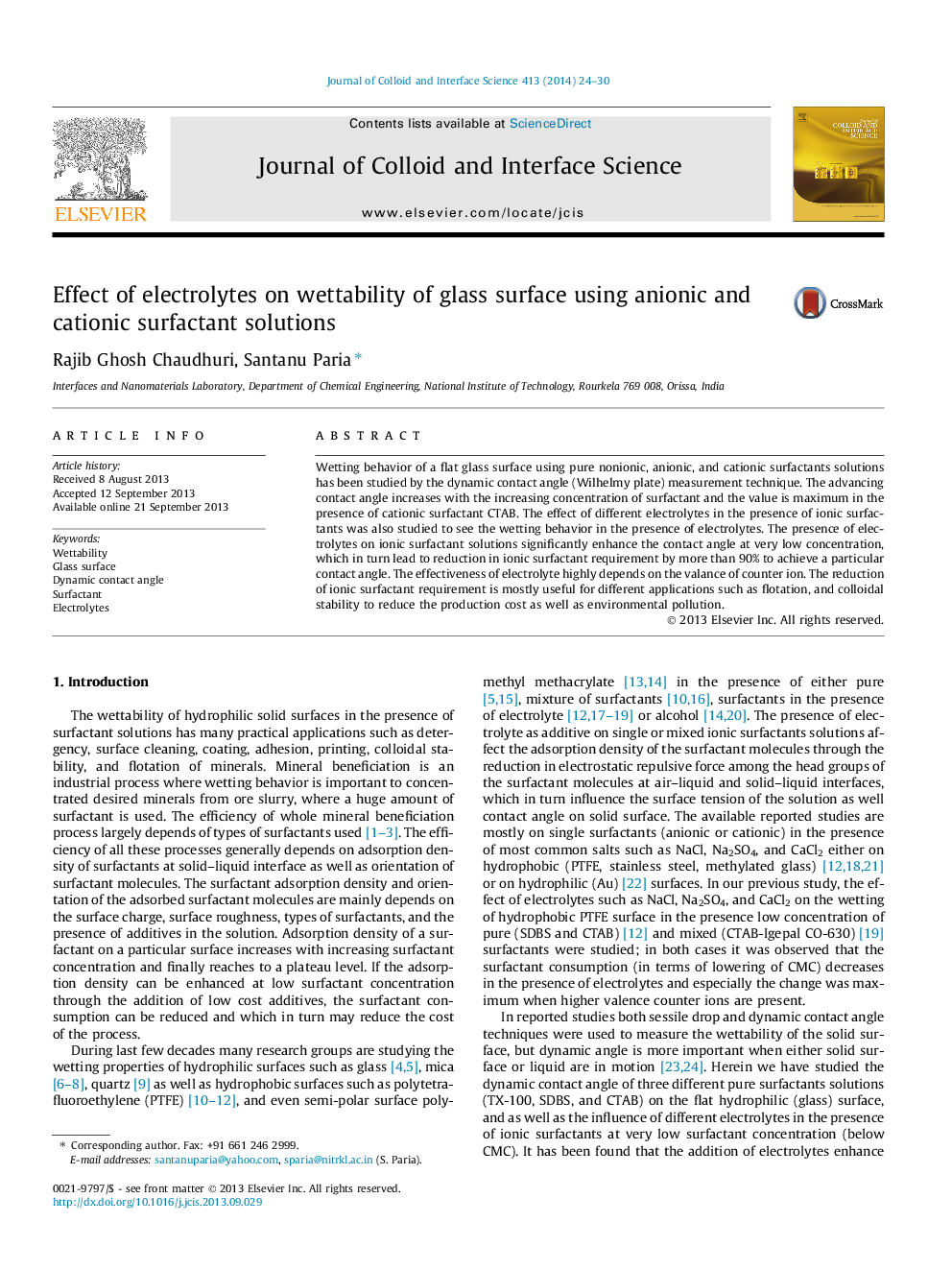| Article ID | Journal | Published Year | Pages | File Type |
|---|---|---|---|---|
| 607506 | Journal of Colloid and Interface Science | 2014 | 7 Pages |
•Glass surface wettability by ionic surfactant solutions decreases significantly by electrolytes.•Counter ion valance is more important for enhancing contact angle.•Presence of electrolyte increase the adsorption density of surfactant molecules on glass surface.
Wetting behavior of a flat glass surface using pure nonionic, anionic, and cationic surfactants solutions has been studied by the dynamic contact angle (Wilhelmy plate) measurement technique. The advancing contact angle increases with the increasing concentration of surfactant and the value is maximum in the presence of cationic surfactant CTAB. The effect of different electrolytes in the presence of ionic surfactants was also studied to see the wetting behavior in the presence of electrolytes. The presence of electrolytes on ionic surfactant solutions significantly enhance the contact angle at very low concentration, which in turn lead to reduction in ionic surfactant requirement by more than 90% to achieve a particular contact angle. The effectiveness of electrolyte highly depends on the valance of counter ion. The reduction of ionic surfactant requirement is mostly useful for different applications such as flotation, and colloidal stability to reduce the production cost as well as environmental pollution.
Graphical abstractFigure optionsDownload full-size imageDownload high-quality image (51 K)Download as PowerPoint slide
